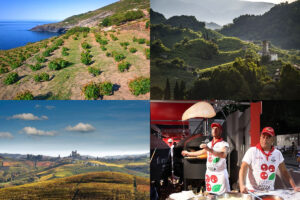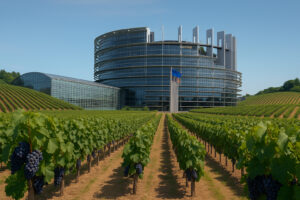“America loves Italian wine”, but how is wine sold in the States? The international Vinitaly tour has taken producers to some wine stores in New York and New Jersey, to find out how different and complex the market is compared to the Italian market, which has opened to various realities that are hard to imagine without seeing them from the inside. The only trend confirmed by all is the price range: Americans have not given up drinking Italian wine, but the target price, in most cases, is set between 10 and 20 dollars a bottle. There’s the Astor Wine method (www.astorwines.com), a mega store where you can find wines from around the world and the bottles are divided by region of origin. The managers do not rely on guidebooks or intermediaries, but they choose to focus on very small wineries and grape varieties for Italy, representing all Italian wines, but in close competition with wines from France and the new world, in terms of price range. This is why, explains the Astor Wine Store in New York, it is essential to have highly distinctive wines, which are characteristic and different from others: in other words, from Italy they do not want any of the wines from international grape varieties.
The Total Wine & More (www.totalwine.com) method is completely different: it is a giant chain of 69 stores across the States. In each store, there are bottles ranging from 3 to 3000 dollars. Here the dominant criteria is division by variety: on the endless shelves in the shops all the Cabernet Sauvignon in the world are grouped together, all the Chardonnay, and so on, although a prominent place is given to wines from France and Italy, in some cases divided by region. The chain, which has both import and distribution licenses, focuses on a team of tasters who select wineries, many of which produce exclusively for the chain or create ad hoc private label lines. The numbers are impressive: 8000 references of wine in each store, which serve about 6000 customers a week.
A totally different method is that of The Wine Library (www.winelibrary.com), in Springfield, created by the Vaynerchuk family, which has become a major success thanks to Internet, one of the most important sales channels for the store. Here the wines are divided by region and type, and Italian wines represent 15% of the total. The ranking of the most popular international magazines, such as “Wine Spectator”, “Wine Advocate” and “Wine Enthusiast” appear next to each label. But, there is also a new concept that focuses on the social network: consumers who buy online can rank the site www.cellartracker.com, in a sort of “Guide 2.0” where there is an average score by the experts but also the thousands of consumers who have tasted the wines give their scores, creating a “buzz” that might even decide the fate of a bottle.
The numbers are impressive here, too: 3400 references always available, special sales with invitations by mail and an element of surprise (for instance, “today we have an offer on a special wine, come and discover what it is...), and they can sell 400 cases of wine in 12 hours. It is not about slashing tout court: the New Jersey law prohibits selling below cost. It is essential, then, for producers meeting these different realities, to understand the dynamics and mechanisms of exactly how they can move their bottles in this jungle market that offers many opportunities but also presents many difficulties. And the opportunities offered by the new format of “Vinitaly in The World” can provide key knowledge to succeed on markets worldwide.
Copyright © 2000/2025
Contatti: info@winenews.it
Seguici anche su Twitter: @WineNewsIt
Seguici anche su Facebook: @winenewsit
Questo articolo è tratto dall'archivio di WineNews - Tutti i diritti riservati - Copyright © 2000/2025








































































































































































































